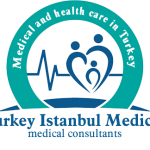What is Birth in Water?
Birth in Water, as an alternative method of birth, means the birth of the baby under water.
Birth is a natural, exciting, restless and painful process. At this point, the water birth method, which allows the expectant mother to relax physically and reduces birth pain, offers an easier and more comfortable birth process alternative.
In the water birth method, the expectant mother enters a water tub system with 37 degrees water at body temperature, and specialist doctors perform the birth process in this water. The warmness of the water provides relaxation of the muscles of the expectant mother and brings mental relaxation.
During water birth, as a result of the relaxation in the muscles and mind, the blood flow to the placenta increases, and the birth is less painful and more comfortable.
In addition, with the effect of water, there is an increase in the secretion of oxytocin and endorphins, also called natural morphine, and the secretion of adrenaline hormone decreases depending on this situation. While the contractions are getting stronger, the muscles relax and thus the labor pains become more manageable.
What are The Conditions for Giving Birth in Water?
Who Can Give Birth in Water?
There are some conditions for pregnant women who can give birth in water, which is offered to pregnant women as an alternative delivery option.
Although some of these conditions differ in practice, the conditions for giving birth in water can be listed as follows:
- First of all, the expectant mother must have expressed her desire for water birth and approved the person who will give birth,
- Non-risk pregnancies with a gestational week of 37 weeks and above (pregnancy should be followed from the first day and should attend trainings),
- Absence of systemic disease,
- If it is to be done at home, it must be a maximum of 45 minutes away from the hospital,
- Cervical dilatation should be at least 4-5 cm,
- Should be a single fetus, multiple pregnancy (Optional)
- Uterine contractions should be regular and strong,
- There should be no vaginal bleeding,
- Should not have HIV/AIDS disease, (Optional)
- Amniotic fluid should not contain meconium,
- There should be no fetal distress,
- No breech development (Optional)
- There should not be pregnant women who had a previous cesarean section (Optional)
In the UK, RCOG and RCM support all healthy pregnant women without complications to give birth in water.
- Positive group B streptococcal carriage is not contraindicated for water birth.
Who Cannot Give Birth in Water?
- Those who will give birth prematurely,
- In cases where the baby is large and in multiple pregnancies,
- In cases where the baby is reversed,
- Since the need for cesarean section is high in risky pregnancies that may have problems during normal delivery, it is not recommended for these pregnant women.
What are The Advantages of Water Birth?
Water birth has many advantages. However, it would be more accurate to consider this separately in terms of mother and baby.
Advantages for The Mother
- If water birth is preferred during the first stage of labor, it speeds up the birth process by an average of 30 minutes.
- Warm water used during childbirth relaxes the muscles of the expectant mother. Thus, the endorphin and serotonin hormones increase in the expectant mother and both physical and psychological relaxation are provided.
- It makes labor pain more manageable.
- The mother can easily change positions as she can move more easily in the water.
- As water birth reduces pain, the need for medication/analgesia is also reduced.
- The mother can participate more effectively in the birth process, so the birth becomes easier.
- The rate of using the birth incision decreases.
- Cesarean section rates decrease.
- A positive birth experience occurs for the expectant mother and her spouse.
Advantages for The Baby
- In water birth, the baby comes out of the amniotic sac in the uterus and first goes to the warm water pool and then to the mother’s lap. In other words, it makes a smooth transition from one liquid medium to another liquid medium. This allows the baby to feel safe without feeling panic.
- As water birth reduces the use of drugs/analgesia and other interventions, the baby is protected from possible side effects caused by these.
- It reduces the possibility of damage to the baby’s skull and brain cells, as it provides an easy delivery.
What are The Disadvantages of Birth in Water?
Some studies in the literature emphasize that water birth may have potential complications for the mother and newborn.
If we list these negative effects;
Disadvantages for The Mother
- Hyperthermia, dehydration in the mother
- Infection
- Postpartum bleeding
- Water embolism
Disadvantages for The Baby
- Breathing Difficulties, Convulsions, Hypoxic İschemic Encephalopathy
- Neonatal İnfections (Water-Borne)
- Fetal Tachycardia, Hyperthermia
- Neonatal Polycythemia, Hyponatremia
- Cord Rupture (With Neonatal Hemorrhage)
- Water Swallowing/Suffocation
- Fetal/Neonatal Death
In Which Situations Is Water Birth Risky?
When the necessary environment is provided, the risk of birth in water carries the same risk as in every birth. In addition, the birth process is easier than normal as the water calms both the mother and the baby.
With the development of hospitals with water birth facilities in our country, it is expected that water birth will increase day by day.
In some cases, water birth is not recommended and considered risky:
- If the baby is breech, water birth can be risky.
- Water birth can be risky if the baby is very large.
- Water birth is not recommended if the mother has diabetes. And if the mother is going to give birth to twins or more, water birth can be risky.
- Water birth can be risky if the temperature and disinfection of the tub or pool to be delivered is not well adjusted.
- If the water is contaminated with the mother’s feces, the germs in this feces can be transmitted to the baby.
- Water birth carries the risk of infection as the birth canal is open during birth.
- Water birth does not promise as painless birth as an epidural.
- If the mother is overweight, water birth can be risky.
- Water birth is not recommended for premature birth.
What are The Necessary Conditions for Water Birth to Occur?
- Doctors, nurses, midwives, birth coaches, etc., who will help the birth to take place. presence of health professionals such as
- Providing sterile and other necessary conditions for the pool or tub where the birth will take place.
- Taking infection control measures
- Availability of a suitable environment for birth outside of water when necessary.
- Having the necessary preparation to ensure that the temperature of the water is 37 degrees and that it does not change
In addition to these, some materials are also needed for water birth to take place.
What are The Equipment Required for Birth in Water?
- Doppler or electronic fetal (in the womb) monitoring tools with waterproof feature
- Standard, filtered tap water
- Shoulder-length gloves
- Waterproof clothing and protective glasses used by the paramedics assisting the birth
- Neonatal radian (to keep the baby warm in the womb) and resuscitation (cardiac massage and respiratory support) tools for the baby
- Towels, blankets, delivery kits, etc. for the expectant mother.
How Does Water Birth Occur?
Water birth is no different from other birth methods in terms of the stages of the birth event.
In general, the birth process consists of 3 main stages.
-
Stage 1:
It begins with the dilation of the cervix. The baby moves towards the birth canal. It takes 8-12 hours on average. There are gaps of 5 to 30 minutes between contractions, but they become more severe and frequent over time. The amniotic fluid sac ruptures at this stage, that is, water comes in.
-
Stage 2:
At this stage, the baby begins to pass through the birth canal. The cervix becomes the widest possible. You feel a similar but much more intense feeling of pressure when you need to go to the toilet. You may be asked to push during these contractions. This stage may vary depending on whether you have given birth before, how many times you have given birth, and the position and size of the baby. Birth takes place at this stage.
-
Stage 3:
Contractions start again 5-15 minutes after the baby is born, at this stage the placenta leaves the uterus and goes out of the body. Serious tremors may occur after the placenta is removed, this is normal.

